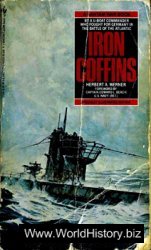By 1962, the world had become used to the cultural manifestations of the clash between East and West.660 International exchanges of exhibitions, intellectuals,
And artists, and the intense competition to boost one’s own prestige and diminish that of the enemy had transformed culture into war by other means. The old professionals in the culture game were the Soviets. The Soviet Union had been exporting its political culture since founding the state-run International Book Company (known by its Russian abbreviation as Mezhkniga) in 1923 and had followed it up by creating the All-Union Association for Cultural Relations with Foreign Countries (Vsesoiuznoe obshchestvo kulturnykh sviazei s zagranitsei, known by the acronym VOKS) in 1925. The Communist International (also known as the Third International) had sought to coordinate the leadership of Communist parties around the world, though purges crippled this organization long before Iosif Stalin formally closed it down as a gesture of goodwill to his wartime allies.
In the postwar period, Moscow’s international political propaganda was the province of the Department of Propaganda and Agitation within the Communist Party of the Soviet Union and of COMINFORM (the Communist Information Bureau set up in 1947 to coordinate the efforts of local Communist parties around the world). The system had its problems. The competing bureaucracies struggled to settle the issue of the role of the Ministry of Foreign Affairs. In 1953, the ministry assumed direction of VOKS through a new Department for Ties with Foreign Communist Parties. In 1956, Nikita Khrushchev launched a major cultural offensive around the world, which taken alongside his simultaneous denunciation of Stalin, looks rather like a rebranding campaign by a twenty-first century multinational corporation. He dissolved COMINFORM and, in 1957, replaced VOKS with the Union of Soviet Societies of Friendship and Cultural Relations with Foreign Countries (SSOD) outside the foreign ministry. He also created a new State Committee for Cultural Ties (GKKS) to administer cultural relations with all states, rather than just other Communist countries. This structure was further complicated by the presence of a host of front organizations reaching out in the name of youth or peace or both. The final player in Moscow’s propaganda line-up throughout the period was the KGB, which covertly subsidized sympathetic newspapers across the developing world and planted disinformation stories.661
In the 1960s, the Soviet state added another layer of international propaganda organizations. In 1961, Moscow created an international press agency, Novosti (News), in order to extend the reach of its version of Soviet and foreign news. Three years later, the SSOD, the Soviet Writers’, Journalists’, and Composers’ Unions, and Novosti launched a new international radio station called Radio Peace and Progress that purported to be independent of the government. Few overseas listeners seem to have been persuaded. The structures of Soviet propaganda were not stable for long. In 1967, Leonid Brezhnev replaced GKKS with a Department of Cultural Relations within the Foreign Ministry, but the pace of Soviet cultural outreach did not slacken.662
Soviet initiatives in the middle years of the Cold War included displays of technology, the export of certain prestige motion pictures, the mass production of cheap editions of classic Russian literature, and spectacular examples of Soviet ballet. Ironically, movies shown in the West such as The Cranes Are Flying (Mikhail Kalatozov, dir., 1957) or Ballad of a Soldier (Grigori Chukhrai, dir., 1959) reflected a freedom of form that was frowned on in party circles at home.663 Literature and ballet which tapped into the Russia past revealed a culture of depth, vigor, and sophistication that belied the tired, grey image of the period immediately following World War II. The Soviet regional minorities were always prominently represented in the international version of life in the USSR as, in public at least, the Soviet Union always celebrated diversity. In such images the maidens were always smiling, the economy was always thriving, and the technology always worked. Moscow found its trump card in its triumph in space from the launch of Sputnik, through the first manned flight in 1961 to the spacewalks of the mid-1960s. The whole effort both challenged stereotypes and concealed truths about the USSR.664 When audiences failed to respond to Soviet overtures with the requisite admiration, the KGB simply paid for the necessary demonstrations. It helped the Kremlin if their population believed that the USSR was the envy of the world.665
The achievements of the Soviet cultural and propaganda offensive during the middle years of the Cold War exceeded the simple objective of selling the Soviet system or reassuring audiences at home. Although the USSR sprang from an internationalist ideology, Moscow leaders painted the United States government as the one-size-fits-all universalists, while presenting themselves as the friends to local nationalism. The USSR enabled the leaders of African liberation movements to speak to their own peoples over the channels of

32. The Soviets were eager to show their progress in education. Here foreign students at the newly opened Patrice Lumumba Peoples' Friendship University in Moscow, 1961.
Radio Moscow. By sponsoring Third World nationalism, Moscow hitched its star to one of the big stories of the era and also exacerbated the tendency in Washington to see every nationalist as a Communist and thereby bungle its relations with much of the developing world as a result. If America's own polls are to be believed, the Soviet effort convinced many that the USSR was the wave of the future. Soviet prestige waxed full with its sporting triumphs, international development projects, and recruitment of foreign students to institutions like Patrice Lumumba University in Moscow.
Yet Soviet outreach had its unintended consequences. It opened the Soviet Union to international influences. Khrushchev probably misjudged the relative benefits and costs of international exchange. His cultural agreements with the Western powers in the late 1950s allowed the Soviets to mount exhibitions in New York, London, and elsewhere, but few people came, whereas the reciprocal events, like the American National exhibition held in Moscow in the summer of 1959, electrified the masses and suggested something of the abundance that flowed from the capitalist system. The evidence of Western prosperity became a ticking time bomb for Moscow. At some point Soviet citizens would demand more than the party could provide.666




 World History
World History









